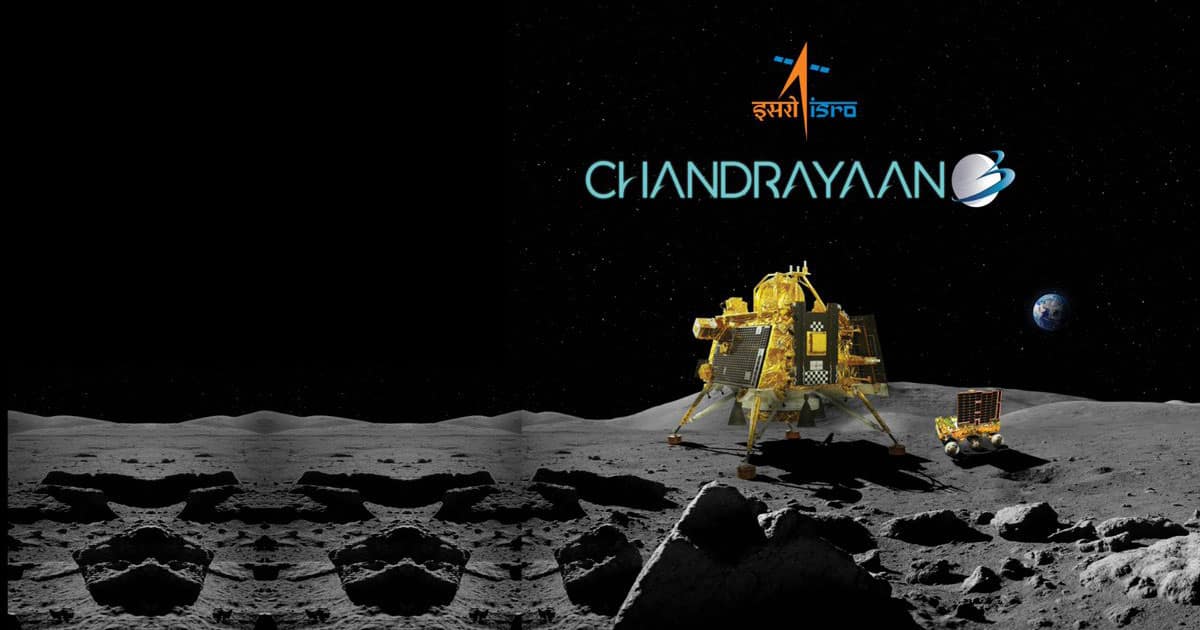In a monumental leap for space exploration, India has scripted history with the successful landing of Chandrayaan-3 on the lunar surface’s uncharted terrain, specifically the South Pole region. This remarkable achievement marks India’s entry into an exclusive club of nations capable of lunar landings and paves the way for unprecedented discoveries and advancements in space exploration.
The Chandrayaan-3 lander, named Vikram, touched down at 6:15 PM IST (12:30 PM GMT) in the Simpherom region of the Moon’s south pole. The landing was confirmed by the Indian Space Research Organisation (ISRO), which said that Vikram was “healthy” and “all systems are functioning.”
India became only the fourth country after the erstwhile USSR, the U.S., and China to make a soft landing on the lunar surface.

The Chandrayaan-3 mission is a follow-up to the Chandrayaan-2 mission launched in 2019. Chandrayaan-2 was India’s first mission to attempt a soft landing on the Moon’s south pole, but it failed due to a technical glitch.
The Chandrayaan-3 mission is equipped with various scientific instruments to study the Moon’s south pole. These instruments will be used to study the composition of the lunar soil, the presence of water ice, and the history of the Moon’s formation.
Chandrayaan – India’s Quest for Lunar Exploration
India’s journey towards lunar exploration began with its maiden Chandrayaan-1 mission in 2008, which identified the presence of water molecules on the Moon’s surface. This discovery fueled the nation’s aspiration to delve deeper into lunar mysteries and led to the development of Chandrayaan-2, a mission comprising an orbiter, lander, and rover.
Chandrayaan-2, launched in 2019, was a significant step in India’s space odyssey. While the orbiter continues to study the Moon from its orbit, the Vikram lander faced an unfortunate setback during its landing attempt, causing it to lose communication merely 2.1 kilometers above the lunar surface. However, this setback only fueled India’s determination to achieve its lunar landing ambitions, resulting in the inception of Chandrayaan-3.
Chandrayaan-3: A Triumph of Innovation
Chandrayaan-3, the brainchild of the Indian Space Research Organisation (ISRO), aimed to rectify the challenges faced during the Chandrayaan-2 landing attempt. Learning from past experiences, ISRO’s scientists redesigned the lander to ensure a seamless touchdown on the rugged and icy terrain of the Moon’s South Pole. The mission also featured a high-tech rover with advanced instruments to analyze the lunar surface composition temperature and conduct experiments.
The South Pole: A Region of Enigmatic Possibilities
Landing on the Moon’s South Pole is a feat, as this region remains mysterious. The perpetual darkness of certain craters makes them prime candidates for the presence of water ice. At the same time, sunlight areas could offer insights into the Moon’s geological and mineralogical history. Chandrayaan-3’s successful landing in this challenging location opened doors to many scientific discoveries that could reshape our understanding of lunar evolution and its connection to Earth.
The successful landing of Chandrayaan-3 is a major milestone for India’s space program and a significant achievement for the country. It puts India in the league of only a handful of countries that have successfully landed spacecraft on the Moon.
The landing of Chandrayaan-3 also has the potential to make significant scientific discoveries. The Moon’s south pole is thought to be rich in water ice, which could be a valuable resource for future human exploration. The scientific data collected by Chandrayaan-3 could help us better understand the Moon’s history and its potential for future human habitation.
The successful landing of Chandrayaan-3 is a proud moment for India and a testament to the country’s growing space capabilities. It is a reminder that India is a significant player in the global space race and is poised to make even more outstanding achievements in the years to come.

